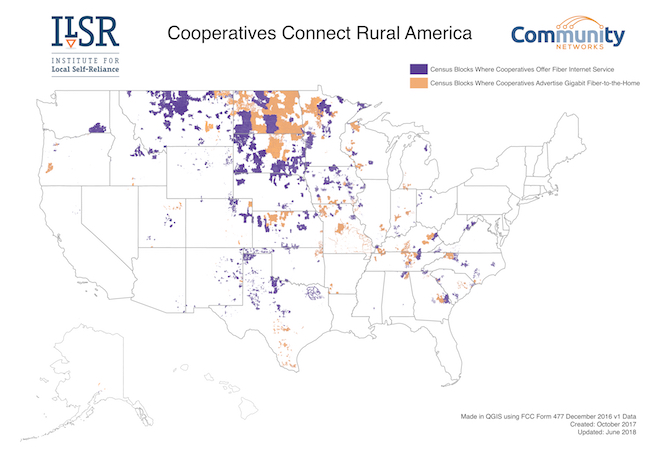PCMag's Fastest and the Local Links That Made Them
On June 18th, PCMag came out with its list of “The Fastest ISPs of 2018.” The analysis looks at ISP performance in several different ways and provides a range of different side-by-side comparisons. The results prove that publicly owned infrastructure has in important role in bringing high-quality Internet access to Americans.
The Dakotas' Co-ops Rock
When taking a wide angle lens view of the fastest U.S. states results, we noticed that two of the top four states with the fastest ISPs were North Dakota and South Dakota. Rural cooperatives in these two states have excelled at deploying high-quality Internet access via fiber optic infrastructure. As a result, North Dakota and South Dakota have some of the most complete coverage of Fiber-to-the-Home (FTTH) Internet access and gigabit FTTH in the country. Notice all the coverage on our cooperative map:

Like rural electrification in the 1930s, cooperatives are taking on the task of bringing high-speed Internet service to members in rural areas. They live and work in the areas they serve. Big ISPs don’t consider sparsely populated areas suitable investment opportunities, so electric and telephone co-ops are repeating the approach of the 1930s, but this time with fiber networks. Dickey Rural Telephone Cooperative in North Dakota and Venture Communications Cooperative in South Dakota are only a few that have worked to get their members connected.



